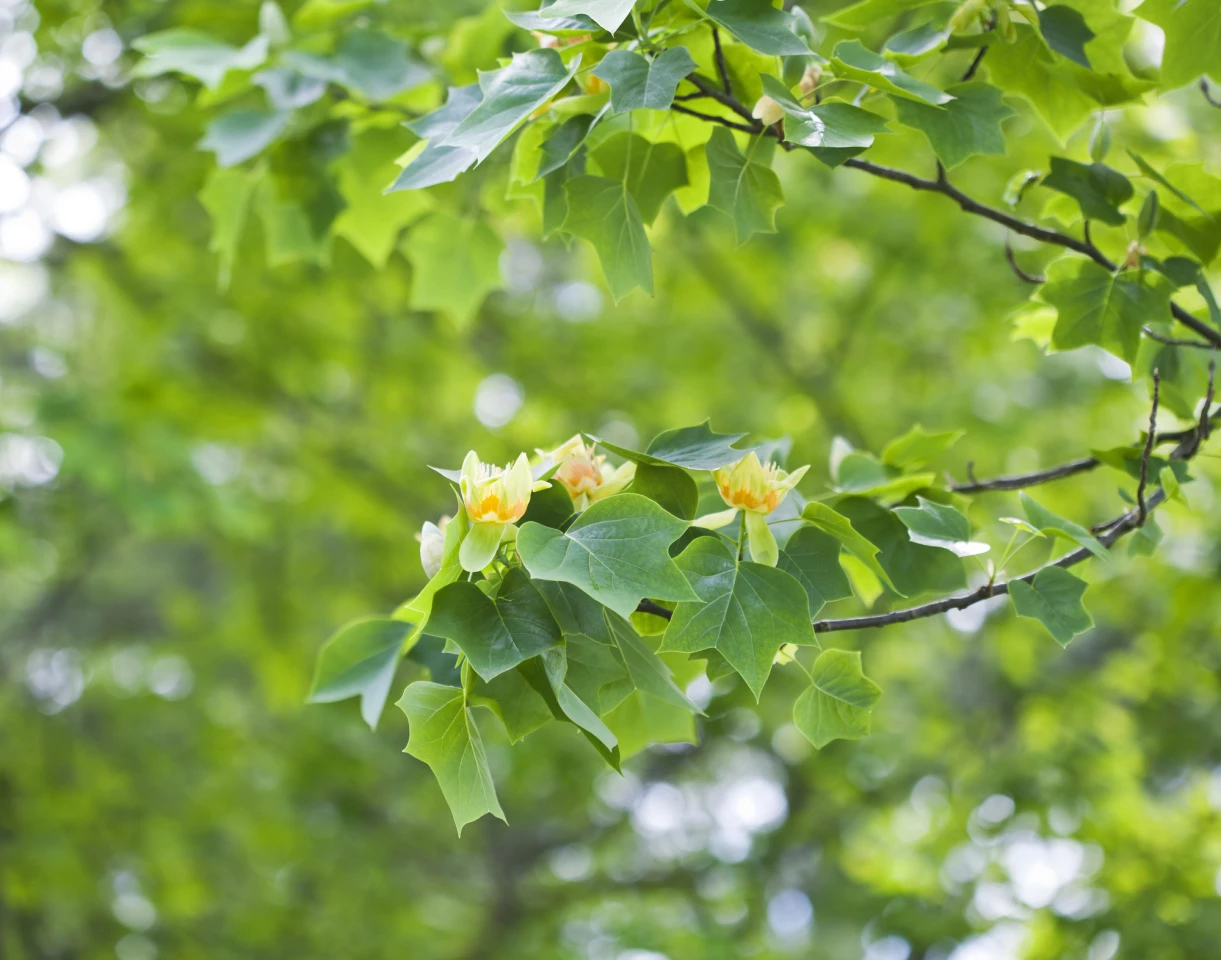Tulip trees have been around for millions of years, but a new analysis of their structure has revealed a previously unknown type of wood. The finding could explain why the trees are great at sequestering carbon and help our efforts to do the same.
In the battle to reduce the amount of atmospheric carbon and, as a result, mitigate the effects of greenhouse gasses rapidly warming our planet, trees are a powerful ally. According to the Arbor Day Foundation, a single mature tree can soak up more than 48 pounds of carbon dioxide from the air each year, and an acre of mature trees can absorb the amount of CO2 produced by a car driven 26,000 miles (~42,000 km).
One tree that's particularly good at ridding the air of carbon is the tulip tree, which consists of two species: Liriodendron tulipifera, which proliferates in North America, and Liriodendron chinense, which thrives in central and southern China. These trees are ancient relatives of the magnolia and can quickly grow to be over 100 feet tall.
Recently, researchers from Jagiellonian University (JU) in Poland and the University of Cambridge in England took samples of 33 different tree species from Cambridge University's botanic gardens. They then froze these samples using a nitrogen bath and looked at them under a low-temperature scanning electron microscope. When they got to the tulip tree sample and examined its secondary cell wall, they were stunned to see that they had just stumbled upon an entirely different type of wood.
“The main building blocks of wood are the secondary cell walls, and it is the architecture of these cell walls that give wood its density and strength that we rely on for construction," said lead study author Jan Łyczakowski from JU. "Secondary cell walls are also the largest repository of carbon in the biosphere, which makes it even more important to understand their diversity to further our carbon capture programmes to help mitigate climate change.”

In all tree species, there are long tube-like fibers found in the secondary cell wall called macrofibrils which hold wood cells. These fibers are made from chains of cellulose and give trees their stability.
During this research, the team found out that angiosperms, which are generally hardwood trees like oaks and cherry, have macrofibrils measuring about 17 nanometers in diameter on average. In gymnosperm trees, which are usually softwoods like pine or cedar, the microfibrils measure 29 nanometers on average. In the case of the tulip tree though, the microfibril diameters came in around 20 nanometers placing it squarely between the two well-known types of wood. The researchers termed this neither hard nor soft wood, "midwood."
Not only do the researchers believe the unique structure of the tulip tree's secondary cell wall is responsible for its fast growth rate, but they think it may have evolved in response to a rapidly declining presence of carbon in the atmosphere about 30 to 50 million years ago. With less carbon dioxide available for use in photosynthesis, the thinking goes, the trees developed these unique cellular structures to hold on to as much of it as possible. That makes them great at helping reduce the overabundance of the gas in our atmosphere today and may help scientists learn how to use trees to an even greater extent to combat climate warming.
“Both Tulip Tree species are known to be exceptionally efficient at locking in carbon, and their enlarged macrofibril structure could be an adaptation to help them more readily capture and store larger quantities of carbon when the availability of atmospheric carbon was being reduced," said Łyczakowski. "Tulip Trees may end up being useful for carbon capture plantations. Some east Asian countries are already using Liriodendron plantations to efficiently lock in carbon, and we now think this might be related to its novel wood structure.”
The research findings have been published in the journal New Phytologist.
Source: University of Cambridge via EurekAlert





